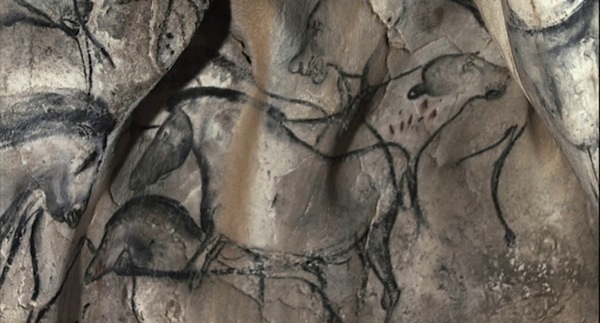 Meek’s Cutoff, I am happy to report, is not so different from the video game Oregon Trail, which most of us played on MacIntosh computers in 1992 and haven’t thought about since. The journey feels long, and your progress is interrupted with status updates like Facebook has never seen: The river is too deep to ford! You lose 50 pounds of food, 4 oxen, and 2 children.
Meek’s Cutoff, I am happy to report, is not so different from the video game Oregon Trail, which most of us played on MacIntosh computers in 1992 and haven’t thought about since. The journey feels long, and your progress is interrupted with status updates like Facebook has never seen: The river is too deep to ford! You lose 50 pounds of food, 4 oxen, and 2 children.
Press spacebar to continue.
But Meek’s is more than a lesson in modern day humility. It’s an epic, beautiful, gruesome poem. It captures the extreme isolation and palpable fears of those early pioneers, lost in a landscape that is indifferent to their suffering. With this, the film becomes a feeling—a gnawing sensation that the end is coming. Either we will find water over these hills or we will be released into the sweet, forgiving arms of Death herself.
Either way it’s over.
(Did you survive Meek’s Cutoff ? Rate the film here!)
From the desert into caves, from poetry to painting, from 1845 to 32,000 years ago, the Cape Breton Island Film Series continues with Werner Herzog’s 3-D documentary Cave of Forgotten Dreams.
We are really, really excited about this movie. Here’s why!
In 1994, the Chauvet cave in southern France was unsealed. Inside, on its limestone canvas walls, are believed to be the first examples of cave paintings, perfectly preserved.
The cave, of course, has remained restricted under the vigilant protection of the French government. Once a year, a small crew of archaeologists are permitted into the space. Herzog managed to get himself on the invite list, and now, he’s taking us with him. Now, we too are allowed to peer inside, to gaze deep into our own flickering history, and to do it (booming voice effect) in 3-D!
Believe what you will about 3-D movies. It’s either a gimmicky cash grab (what isn’t?) or it’s the neatest thing since sliced bread (whose novelty is definitely wearing off). It’s either high art or pop culture junkfood. It is either the future or it’s history. We cannot tell what will happen; we cannot see from here, even when sporting our uber dorky 3-D glasses.
What we can do is trust our filmmaker, and when Werner Herzog (Grizzly Man, Encounters at the End of the World) is the man behind the camera, that just seems like a reasonable thing to do. Herzog uses 3-D technology to take us into the experience of entering the Chauvet cave. We look with him, and we see the sharp, confident lines and shapes formed over the contours of the walls, flickering in shadow and imagined torchlight.
The images we see are mostly animal—paintings of an incredible variety: horses, lions, bison, mammoths, and rhino, to name a few. The rhino showing off an exaggerated horn, a symbol of his power. There is a small statue of a woman, her sexual organs large and loud, signs of her fertility.
Herzog spends most of the film here, allowing us to watch these dancing images, and wonder. As we do, a voice that is not our own considers the possibilities, past and present. Herzog’s narration reflects on the scene in a way that only he can. His distinctive voice and earnest musings create a unique filter through which we can explore this largely untouched world.
Cave of Forgotten Dreams could prove to be the ideal platform for 3-D technology. Herzog uses it to bring us along on a rare and captivating journey. He takes us inside—the cave, the film, the art form. He takes us deep into history and deeper into ourselves. What we discover there will be largely ours to imagine, though the filmmaker is sure to add a few colourful touches.
A musical silence is followed by the sound of a beating heart.
“Is that their heartbeat or ours?”
We wonder, in spite of ourselves.
Werner Herzog’s Cave of Forgotten Dreams plays in 3D this Thursday, 7pm, at Empire Theatres Studio 10.

